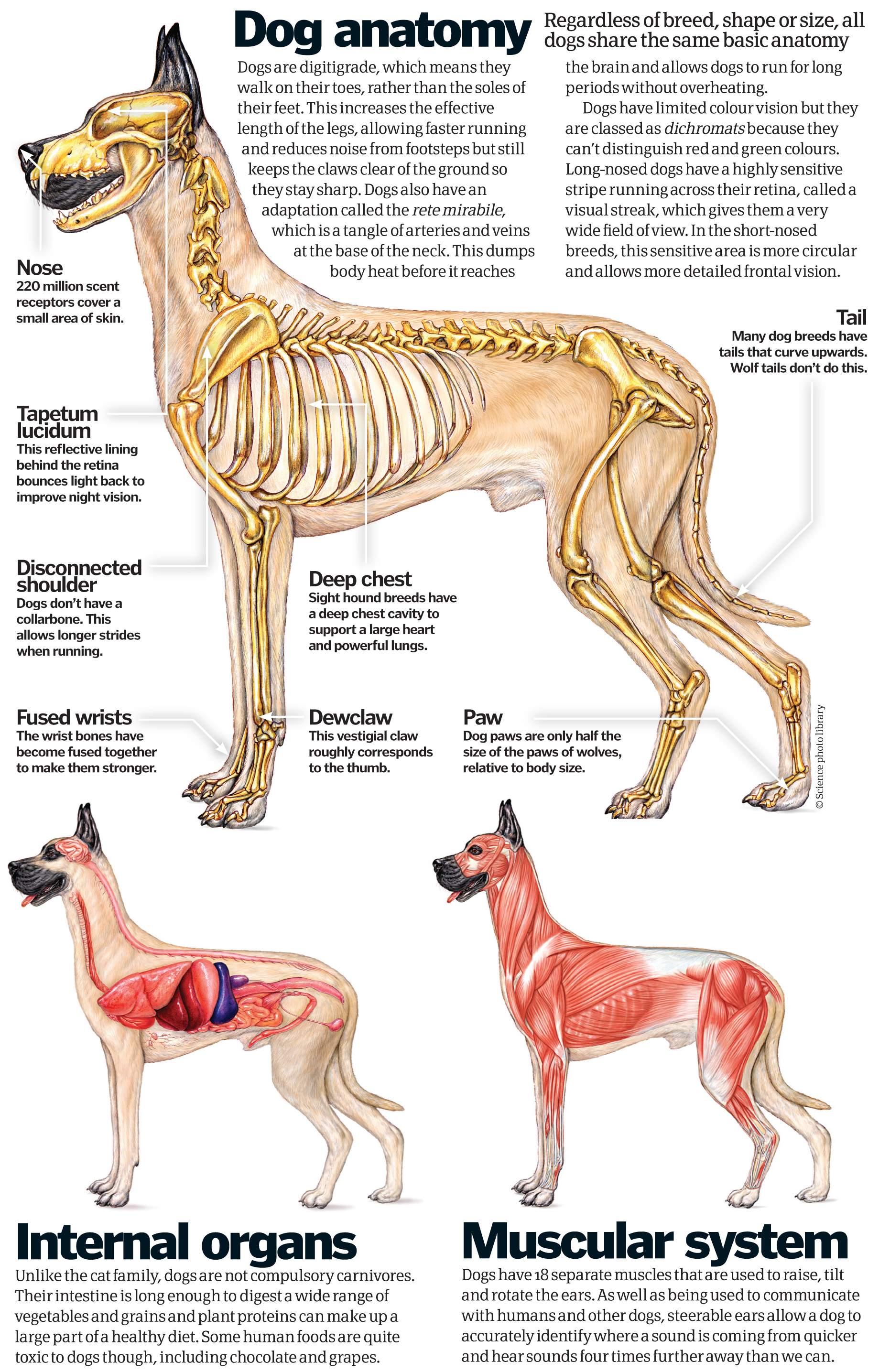
Dog science Why do dogs have such a good sense of smell? And other
Shaggy fur Short soft fur The shape of these structures vary greatly in the same way as their colors and hair characteristics. The two most common head shapes for a dog are a narrow skull with a long face, such as a German Shepherd and a short skull with a short face, such as a pug dog There are many variations to these shapes in between. Teeth
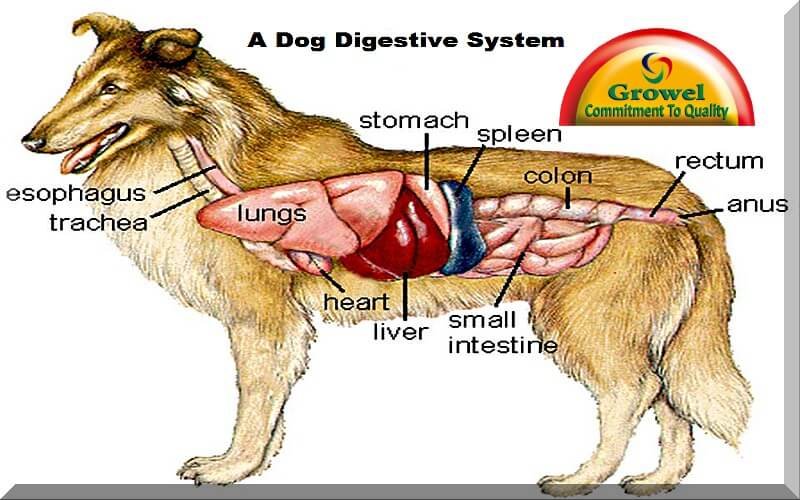
A Dog Digestive System Growel Agrovet
A sturdy pelvic limb Leg bones like the tibia and fibula Metatarsal bones Metacarpal bones Carpal bones Central tarsal bone Thoracic limb Your dog's teeth are important bones that help your dog chew, eat, and hunt. Keeping your dog's teeth healthy is important to their overall health. SUPPORT YOUR DOG'S BONE HEALTH

Internal Organs Of A Male Dog. From Photograph by Ken Welsh
Dogs also have organs that are vital to their survival, such as the heart, lungs, and liver. The anatomy of a dog can vary depending on their breed. For example, a Greyhound has a lean and muscular body that allows them to run at incredible speeds, while a Bulldog has a stocky and powerful build that makes them great for activities like weight.
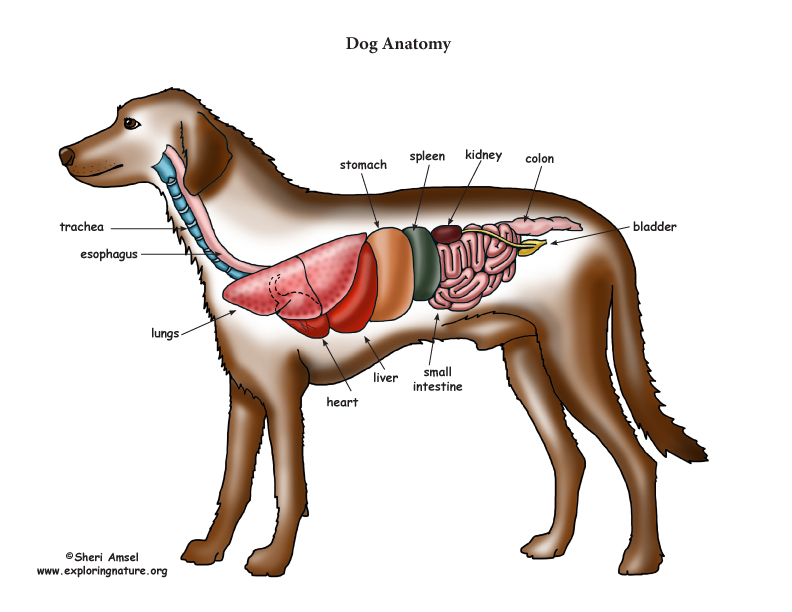
Dog Anatomy (Thoracic and Abdominal Organs)
Dog anatomy comprises the anatomical studies of the visible parts of the body of a domestic dog.Details of structures vary tremendously from breed to breed, more than in any other animal species, wild or domesticated, as dogs are highly variable in height and weight. The smallest known adult dog was a Yorkshire Terrier that stood only 6.3 cm (2.5 in) at the shoulder, 9.5 cm (3.7 in) in length.
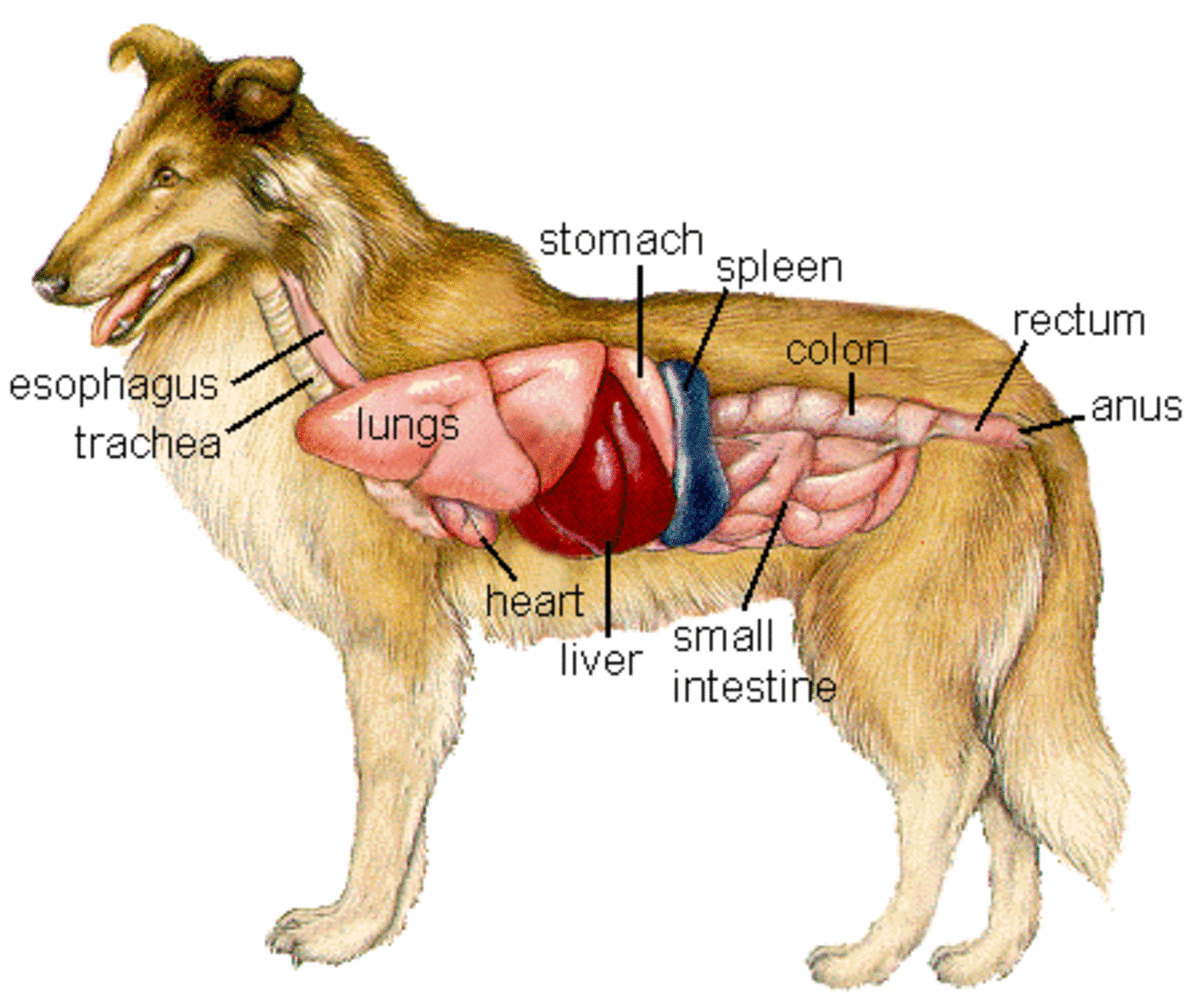
Coughing in Dogs May Signal Heart Disease HubPages
Thighs: The upper thigh is above the knee of the hind leg. The lower thigh is beneath the knee. Stifle: The stifle, or knee, sits on the front of the hind leg. It falls in alignment with the abdomen. Hock: The hock is also known as the harsus. This is the joint on the dog's hind legs that makes an awkward sharp angle.

Dog Anatomy Stock Photos, Pictures & RoyaltyFree Images iStock
The stifle or knee joint of the dog's leg is important in the clinical aspect. You should know every single structure of the stifle joint of the dog. There is a full guide on the stifle joint of the dog's leg here in anatomy learner. A dog's thigh is another important area that includes the femur bone.

anatomy of a dog Google Search Dog anatomy, Dog animation, Dog pictures
The anatomy of a dog includes its skeletal structure, reproductive system, the internal organs, and its external appearance. The following paragraphs explain all these aspects in brief, along with diagrams, which will help you understand them better. External Anatomy Dogs, like all mammals, have eyes, a nose, a forehead, and ears.

Anatomy Of Back Organs / Anatomy Male Organs in Loop Stock Footage
Dogs have a third trochanter, which is the attachment site of the superficial gluteal muscle.. (From Evans HE: Miller's anatomy of the dog, ed 4, Philadelphia,. The ribs limit overall thoracic spine motion and protect internal organs. Joint Motion. The body segments of the forelimb and hindlimb are illustrated in Figures 5-3 and 5-4,.
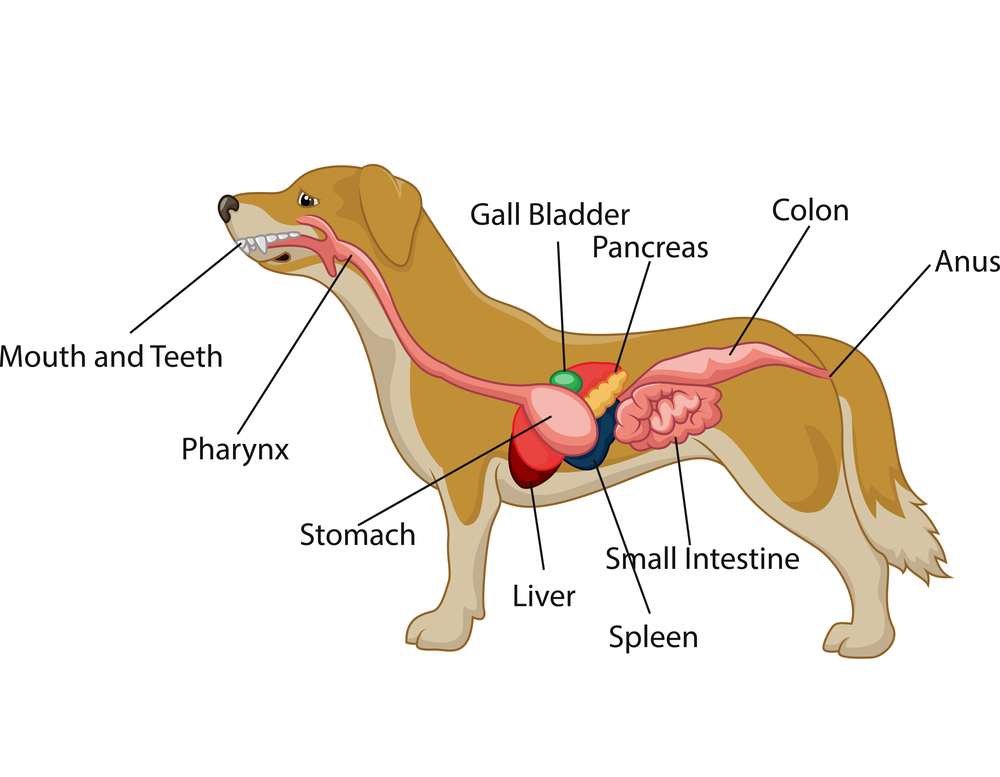
Dog Digestive Process and what the stages are and how it works
On the left side view of a dog's internal organs, you can see the lungs, heart, liver, stomach, spleen, kidney, intestines, bladder, and the rectum in that order from front to back. You can also view the spinal column and the brain. Laurie O'Keefe Dog Anatomy Organs Right Side

Dog anatomy4 views Illustration by Laurie O'Keefe Medical
Perhaps the most significant is head shape. There are three main different types of head formation in dogs: Dolichocephaly: dolichocephalic dogs are those with a head which is longer than it is wide. The skull and snout are elongated and their eyes are located in a lateral position, making it difficult to see well bifocally.

Глубокие мышцы, внутренние органы собаки Dog Muscles & Internal
Abdomen Abdominal aorta Abdominal mammary gland Abdominal mammary region Accessory carpal bone Acromion Adductor muscle Ala of ilium; Wing of ilium Ala of nose Anconeus muscle Antebrachial region Aortic arch Apex of nose; Tip of nose Arm
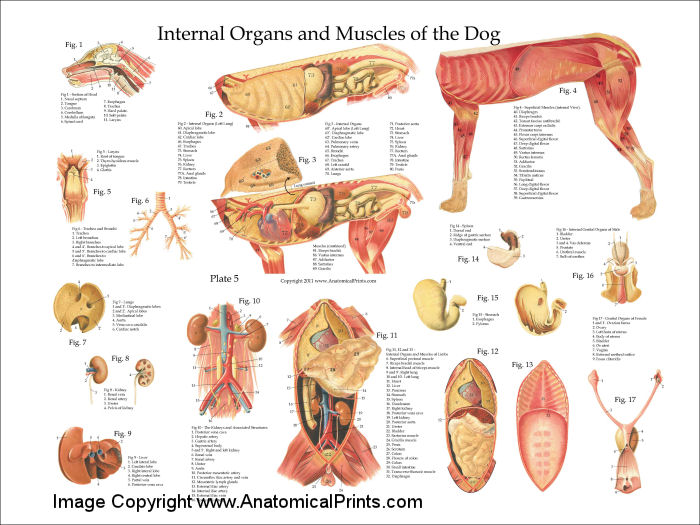
Dog Internal Anatomy Poster
Diaphragm: The diaphragm is the primary muscle involved in breathing. When a dog barks, it contracts the diaphragm forcefully to expel air out of its lungs and through its vocal cords. Laryngeal muscles: The laryngeal muscles control the opening and closing of the dog's vocal cords, which are located in the larynx (voice box) in the neck.
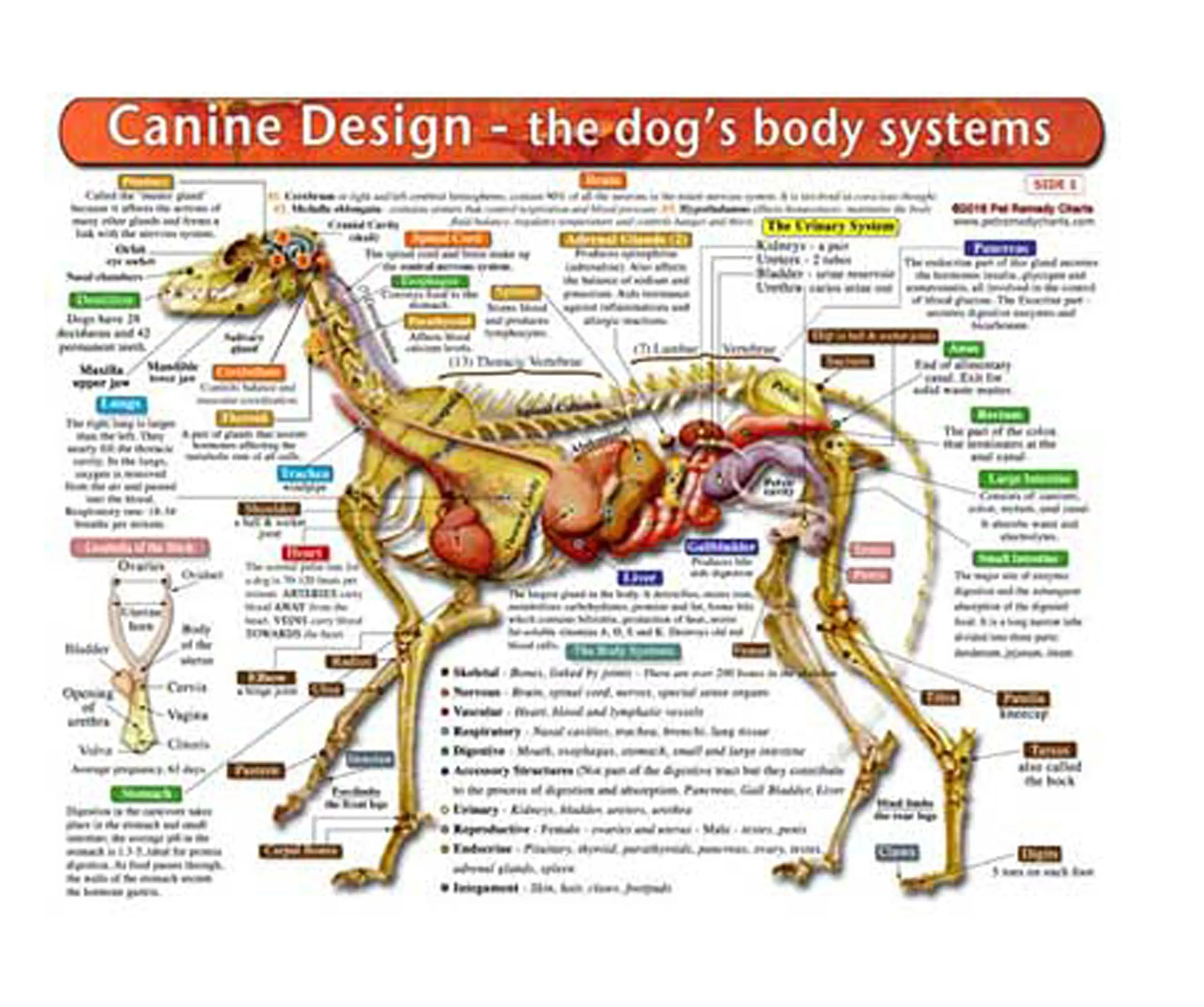
Buy The Dogs Body Systems A DoubleSided, UV Protected, Laminated Dog
Quick idea: in this article, you will learn the location of different organs from the different systems (like skeletal, digestive, respiratory, urinary, cardiovascular, endocrine, nervous, and special sense) of a dog with their important anatomical features.

Anatomy of dog with inside organ structure examination vector
Summary Anatomy of a Dog Dog anatomy details the various structures of canines (e.g. muscle, organ and skeletal anatomy). The detailing of these structures changes based on dog breed due to the huge variation of size in dog breeds. Would you be surprised to know that short dogs are more aggressive? Or taller dogs are more affectionate?

Anatomy of a male dog crosssection, showing the skeleton and internal
ISSN 2534-5087. This vet-Anatomy module presents an anatomy atlas of the abdomen and pelvis of the dog in CT. CT images are from a healthy 6-year-old castrated male dog. This module displays cross-sectional labeled anatomy images of the canine abdominal cavity and the pelvis on a Computed Tomography (CT) and 3D images of the abdomen of the dog.

148 best images about Canine/Animal Rehab on Pinterest Therapy, Dog
The dog abdomen anatomy consists of boundaries of the abdominal cavity with its organs and associated structures. This article might help you with the details of anatomical facts of the abdomen, both male and female. First, I will try to show you the exact boundary of the dog's abdomen so that you may also identify it from the live dog.